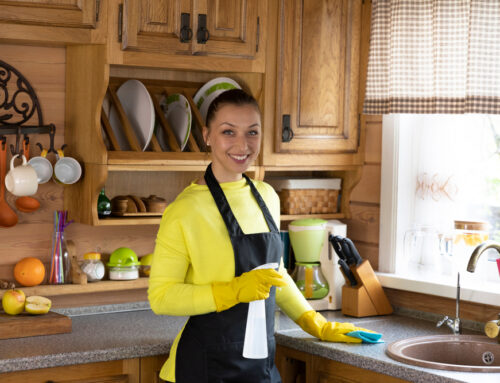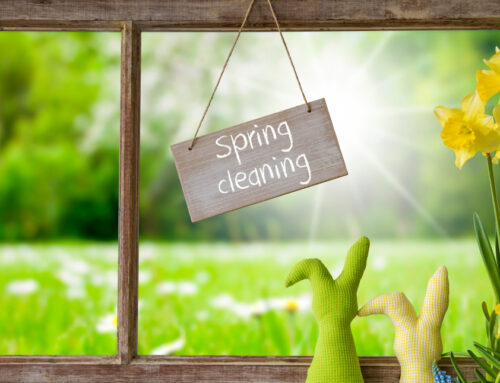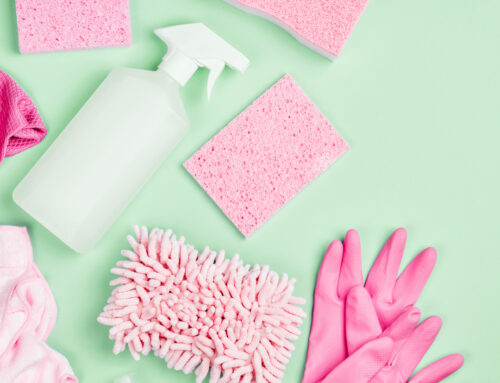Maintaining a tidy and organized living space is a challenge, especially for working individuals and busy families. Juggling professional responsibilities, family commitments, and personal pursuits often leaves little time for thorough cleaning. The Ultimate Cleaning Checklist for Busy Professionals comes to the rescue, providing you with a comprehensive guide to efficiently manage your cleaning tasks without sacrificing your precious time and energy. In this article, we’ll delve into a variety of cleaning strategies, practical tips, and expert insights that will help you maintain a spotless home effortlessly.
Streamline Your Cleaning Routine
Amidst your hectic schedule, it’s crucial to have a well-structured cleaning routine that ensures your living space remains neat and inviting. Let’s explore the ultimate cleaning checklist that caters to the needs of working individuals and busy families, allowing you to strike the perfect balance between your responsibilities and a clean home.
Quick Daily Tasks for a Fresh Start
Kickstart your day with a few minutes of tidying up. Taking just a brief moment each morning to address the state of your living space can set the tone for a productive day ahead. Clearing clutter, making your bed, and wiping down surfaces might seem like small tasks, but their impact is profound. This seemingly simple routine holds the power to create an instantly refreshing environment that welcomes you as you step into the day.
Clear clutter: Begin by tackling any visible clutter. Whether it’s the pile of papers on your desk, the scattered shoes by the entrance, or the miscellaneous items on your countertops, putting things back in their designated places instantly creates a sense of order. A clutter-free environment not only enhances visual appeal but also helps clear mental clutter, allowing you to focus on the day’s tasks without unnecessary distractions.
Make your bed: Making your bed each morning might appear insignificant, but it’s a habit that’s backed by a sense of accomplishment and discipline. Straightening the sheets and arranging pillows not only transforms the look of your bedroom but also encourages a sense of organization. It’s a visual reminder that you’ve started your day with intention and that you’re ready to approach tasks systematically.
Wipe down surfaces: Taking a damp cloth and swiftly wiping down surfaces like kitchen counters, bathroom sinks, and coffee tables is an effortless way to create a clean and inviting atmosphere. This quick cleaning ritual eliminates dust and grime that might have settled overnight, instantly refreshing your space. As you perform this task, you’re not only maintaining cleanliness but also signaling to yourself that you value and care for your living environment.
The impact: The combined effect of these morning tasks is more than just physical. It’s psychological. Stepping into an organized and tidy space stimulates a positive mindset. It minimizes the visual chaos that can sometimes contribute to stress and allows you to start your day with a clear mental slate. Moreover, the act of tidying up itself can be meditative, providing a few moments of calm before the hustle and bustle of the day takes over.
Weekly Deep Cleaning Focus
Designate a specific day of the week for deeper cleaning tasks. Amidst your busy schedule, it’s essential to set aside focused time for more comprehensive cleaning. By designating a specific day each week for these tasks, you create a structured approach to maintaining the cleanliness and hygiene of your living space. This practice not only ensures that your home remains inviting but also prevents the accumulation of dirt and grime that can lead to more extensive cleaning endeavors down the line.
Vacuuming: One of the cornerstones of your weekly cleaning routine should be vacuuming. Regular vacuuming not only removes visible dirt and debris but also eliminates allergens and dust that can accumulate in carpets and rugs. Pay particular attention to high-traffic areas, as well as spots under furniture where dirt tends to gather. This practice not only keeps your floors clean but also contributes to the overall air quality in your home.
Mopping: Hard floors also require attention. Mopping is an effective way to remove dirt, spills, and stains that accumulate over the week. Use a suitable cleaning solution for your floor type, whether it’s wood, tile, laminate, or another material. By including mopping in your weekly routine, you ensure that your floors maintain their shine and cleanliness, creating a polished and inviting atmosphere.
Dusting: Dusting may seem like a straightforward task, but its impact is significant. Dust accumulates on surfaces, shelves, and electronics, not only affecting the appearance of your space but also contributing to allergies and respiratory issues. With a microfiber cloth or a duster, go through your living areas, focusing on surfaces that tend to collect dust. This includes shelves, tables, electronics, and decorative items. Regular dusting keeps your home looking fresh and prevents allergens from building up.
Sanitizing high-touch areas: In today’s world, maintaining hygiene is more critical than ever. Allocate time during your weekly cleaning session to sanitize high-touch areas. These include doorknobs, light switches, remote controls, and kitchen surfaces. Using a disinfectant cleaner, wipe down these areas to eliminate germs and bacteria that can spread illness. This practice not only contributes to a healthier living environment but also provides peace of mind, especially if you have a busy household.
The benefits: Establishing a specific day for deeper cleaning tasks serves several purposes. Firstly, it ensures that these crucial tasks don’t get overlooked or postponed indefinitely due to your busy schedule. Secondly, by bundling them together, you’re more likely to approach them with efficiency and a focused mindset. This approach prevents cleaning tasks from becoming overwhelming and time-consuming.
Moreover, the act of engaging in thorough cleaning on a designated day can be surprisingly therapeutic. As you vacuum, mop, dust, and sanitize, you’re engaging in a proactive form of self-care. You’re creating a clean and orderly environment that contributes to your well-being and the well-being of your family members or housemates.
Decluttering: A Step Towards Minimalism
Frequently decluttering your living space not only maintains cleanliness but also brings a sense of tranquility. In a world where possessions accumulate quickly, the practice of regular decluttering emerges as a powerful antidote to chaos. Beyond the immediate benefits of tidiness, this practice contributes to a profound sense of calm and serenity in your living environment. By carving out time each week to sort through your belongings and part ways with items that no longer serve a purpose, you’re not only creating physical space but also fostering emotional clarity.
Take time each week to sort through belongings: Incorporating a weekly decluttering session into your routine is a mindful decision that yields substantial rewards. Dedicate a specific time slot to this task, treating it with the same importance as any other commitment. As you begin, approach the process with an open mind and a willingness to let go of items that have outlived their usefulness.
Donate or discard items you no longer need: As you sift through your belongings, consider each item’s relevance in your current life. Have you used it in the past year? Does it hold sentimental value? Is it contributing positively to your space? If the answer is no, it might be time to bid it farewell. Items that are in good condition can find new homes through donations, benefiting others while lightening your load. Items that have reached the end of their lifecycle can be responsibly discarded.
The tranquility factor: Decluttering is more than an exercise in tidying up—it’s a practice that influences your emotional well-being. As you release the unnecessary and make space for the essential, you create an environment that promotes mental clarity and reduces stress. The act of decluttering itself can be cathartic, allowing you to let go of attachments and embrace the present moment.
Benefits beyond aesthetics: While a decluttered space is aesthetically pleasing, its impact goes beyond appearances. A clutter-free environment minimizes distractions and promotes focus. It allows you to appreciate the beauty of the items that truly matter to you. Furthermore, a decluttered space is easier to clean and maintain, as there are fewer obstacles and surfaces to tend to.
Emotional attachment and detachment: It’s important to acknowledge that parting with possessions can evoke emotions. Items may hold memories or sentimental value, making the decluttering process challenging. However, it’s essential to strike a balance between holding onto the past and creating a harmonious present. By consciously choosing what to keep and what to release, you’re making room for new experiences and possibilities.
A mindful practice: Approach decluttering as a mindful practice, a regular ritual of assessing your physical environment and its impact on your well-being. Ask yourself if each item aligns with your current goals and values. Does it contribute positively to your life, or is it taking up space that could be better utilized? This deliberate consideration transforms decluttering into a form of self-care—an act of curating your surroundings to reflect your aspirations.
The Kitchen Conundrum: Mastering the Cleanliness
The kitchen is often the heart of the home, but it can quickly become a mess. As a hub of culinary creativity and nourishment, the kitchen is a place where families gather, stories are shared, and delicious meals are crafted. However, due to its frequent use, it’s susceptible to clutter, spills, and messes. Regular maintenance is crucial to ensuring that this essential space remains functional, inviting, and a source of inspiration.
Regularly clean surfaces, appliances, and dishes: To maintain the vitality of your kitchen, establish a consistent cleaning routine that encompasses surfaces, appliances, and dishes. Start by wiping down countertops, tables, and other work areas after each use. This simple practice prevents the accumulation of crumbs, spills, and debris that can lead to pest issues and hygiene concerns.
Appliances also deserve attention. Regularly clean the exteriors of appliances like the oven, microwave, refrigerator, and dishwasher. These surfaces can collect grease, fingerprints, and stains, affecting the overall appearance of your kitchen. Additionally, periodically clean the inside of appliances to prevent odors and ensure optimal functionality.
Don’t forget the dishes—a pile of dirty dishes can swiftly escalate into chaos. Wash dishes promptly after meals or load them into the dishwasher. Keeping your sink area clear and dishes under control not only enhances the aesthetics of your kitchen but also prevents the growth of bacteria and mold.
A clean kitchen is not only hygienic but also a joy to cook and dine in: Beyond the practical benefits of cleanliness, a well-maintained kitchen contributes to an enhanced culinary experience. Cooking in a clean environment is not only more efficient but also more enjoyable. With organized surfaces, ingredients are easily accessible, and the cooking process becomes smoother.
A clean kitchen also fosters a positive atmosphere for dining. Whether you’re enjoying a meal alone or hosting guests, a clutter-free and immaculate space elevates the dining experience. The aroma of the food is more pronounced, the presentation is enhanced, and the act of dining becomes a moment of true enjoyment.
Moreover, a clean kitchen is reflective of your commitment to well-being. It’s a space where you invest in your health by preparing nutritious meals. A hygienic kitchen reduces the risk of cross-contamination and foodborne illnesses, ensuring that the meals you create contribute to your vitality.
The Serene Bedroom Sanctuary
Create a serene bedroom environment by dusting surfaces, laundering linens, and organizing your closet. Your bedroom serves as a sanctuary—a place of rest, rejuvenation, and retreat. To truly embrace its calming potential, it’s essential to maintain a serene atmosphere through regular upkeep. By incorporating simple yet effective practices such as dusting surfaces, laundering linens, and organizing your closet, you can transform your bedroom into a haven of tranquility.
Dusting surfaces: Dust accumulates on surfaces over time, affecting not only the appearance but also the air quality of your bedroom. Regular dusting prevents allergens from circulating in the air and settling on furniture, ensuring that your sleep environment remains fresh and conducive to well-being. Using a damp cloth or a microfiber duster, gently wipe down surfaces like nightstands, shelves, lamps, and decorative items. This practice not only contributes to cleanliness but also creates an inviting ambiance.
Laundering linens: The comfort of your bed largely depends on the quality of your linens. Clean and crisp linens not only enhance your sleep experience but also contribute to the overall aesthetics of your bedroom. Wash your bed linens, including sheets, pillowcases, and duvet covers, regularly to eliminate dirt, sweat, and allergens. Consider using high-quality bedding made from breathable materials for an added layer of comfort. The feeling of slipping into freshly laundered sheets can significantly enhance your sleep quality.
Organizing your closet: A clutter-free bedroom starts with an organized closet. A well-structured closet not only streamlines your morning routine but also contributes to the overall order of your space. Regularly assess your wardrobe and consider donating or discarding items you no longer wear. Organize your clothing by category, utilizing hangers, shelves, and storage solutions to create a visually appealing and functional space. An organized closet reduces visual clutter, promoting a sense of calm and making it easier to choose outfits.
A clutter-free bedroom promotes better sleep and relaxation: The state of your bedroom environment directly impacts your ability to relax and experience restorative sleep. A cluttered and disorganized space can evoke stress and hinder relaxation. On the other hand, a tidy and serene bedroom encourages a sense of calm and tranquility, setting the stage for rejuvenating slumber.
A clutter-free environment minimizes visual distractions, allowing your mind to unwind and transition into a state of relaxation. The absence of clutter also promotes better air circulation, contributing to a cooler and more comfortable sleep environment. Additionally, an organized bedroom facilitates a sense of order, which can have a positive impact on your mental well-being.
Bathrooms: Sparkling Clean and Hygienic
Maintain bathroom cleanliness with regular scrubbing, disinfecting, and replenishing supplies. The bathroom, a space synonymous with hygiene and self-care, plays a pivotal role in our daily routines. Ensuring its cleanliness goes beyond aesthetics—it’s a fundamental aspect of maintaining a healthy lifestyle. By incorporating a routine of consistent scrubbing, disinfecting, and keeping supplies well-stocked, you create a space that not only meets your needs but also contributes to your overall well-being.
Regular scrubbing: Bathrooms are prone to accumulating soap scum, water stains, and grime due to their constant exposure to moisture. Regular scrubbing is essential to prevent the buildup of these unsightly and unhygienic elements. Dedicate time each week to scrub the sink, bathtub, shower, and toilet. Use appropriate cleaning products and tools to effectively remove stains and dirt. By consistently addressing these areas, you’re not only maintaining cleanliness but also preventing the growth of mold and mildew, which can pose health risks.
Disinfecting: The bathroom harbors germs and bacteria due to its use for personal care activities. Disinfecting high-touch surfaces such as faucets, doorknobs, light switches, and toilet handles is paramount to maintaining a hygienic environment. Use disinfectant cleaners to effectively eliminate harmful pathogens and reduce the risk of illnesses spreading. Regular disinfection creates a safer space for you and your family members and reinforces healthy habits.
Replenishing supplies: An essential part of bathroom maintenance is ensuring that supplies are readily available. Keep an inventory of items such as toilet paper, hand soap, towels, and toiletries. Regularly check and restock these supplies to avoid inconveniences and maintain the overall functionality of the space. Having essentials within easy reach encourages proper hygiene practices and ensures a seamless daily routine.
A clean bathroom is a necessity for a healthy lifestyle: The significance of a clean bathroom goes beyond its role in our daily routines—it directly impacts our health and well-being. A bathroom that is not properly cleaned and disinfected can become a breeding ground for germs and bacteria, leading to potential health hazards. By upholding cleanliness standards through regular maintenance, you’re actively contributing to a healthier living environment for yourself and your household.
A clean bathroom promotes personal hygiene and supports wellness. It’s a space where you engage in self-care rituals, and maintaining its cleanliness fosters a positive mindset and enhances your overall sense of well-being. Furthermore, a clean bathroom sets an example for good hygiene practices, especially in households with children, instilling habits that will benefit their health throughout their lives.
The Living Room: Order in Comfort
Your living room should be inviting and clutter-free. As a space for relaxation, socializing, and unwinding, the living room serves as a reflection of your home’s ambiance and your personal style. It’s essential that this area exudes warmth and tranquility, allowing you and your guests to experience a harmonious and inviting environment. By prioritizing a clutter-free approach and incorporating regular maintenance practices, you can transform your living room into a haven of comfort and aesthetic appeal.
Vacuum upholstery: Upholstered furniture is not only a cozy addition to your living room but also a potential collector of dust, dirt, and allergens. Regular vacuuming of upholstery surfaces is essential to maintain cleanliness and ensure a healthy indoor environment. Utilize a suitable upholstery attachment on your vacuum cleaner to gently remove debris and particles from sofas, chairs, and cushions. This practice not only enhances the visual appeal of your furniture but also contributes to the overall air quality of your living room.
Dust electronics: In today’s technology-driven world, electronics are integral to our living spaces. However, they are also susceptible to accumulating dust and grime, which can affect their performance and appearance. Regularly dust your electronics, including televisions, speakers, gaming consoles, and decorative items. Use a microfiber cloth or a duster designed for electronics to gently remove dust without causing damage. This practice not only maintains the aesthetic appeal of your electronics but also ensures their longevity and functionality.
Organize entertainment areas: A well-organized entertainment area creates a focal point in your living room and enhances its overall functionality. Whether you have a television, gaming console, or bookshelf, ensure that each element is arranged in a visually pleasing and organized manner. Tuck away cables and cords to reduce visual clutter. Keep remote controls, DVDs, and other items neatly stored in designated containers. By curating an organized entertainment space, you’re not only enhancing the aesthetics but also promoting a sense of order and tranquility.
Creating a harmonious space: A clutter-free and inviting living room fosters an atmosphere of relaxation and connection. It’s a space where you can unwind after a long day, entertain guests, and enjoy quality time with loved ones. By maintaining cleanliness and organization, you’re creating an environment that supports your well-being and encourages a positive state of mind.
A harmonious living room is more than just a physical space—it’s a reflection of your lifestyle and a sanctuary that nurtures your mental and emotional balance. A clutter-free environment minimizes distractions, allowing you to fully engage in activities that bring you joy, whether it’s reading a book, watching a movie, or having meaningful conversations.
Mastering Laundry Effortlessly
Laundry can quickly pile up, causing chaos. The seemingly endless cycle of laundry is a familiar challenge in many households. Without a structured approach, clothes can accumulate, leading to disarray and unnecessary stress. However, by implementing a well-defined laundry routine and adhering to a series of essential steps, you can transform the laundry process from chaos to order, ensuring a more organized and harmonious home.
Establish a laundry routine: The key to managing laundry effectively is establishing a consistent routine. Designate specific days or times for laundry-related tasks, such as sorting, washing, drying, folding, and putting away. By adhering to a set schedule, you prevent the accumulation of overwhelming piles and maintain a sense of control over this ongoing household chore.
Sort clothes: Sorting clothes before starting the laundry process is a fundamental step that streamlines the entire procedure. Create separate piles for different types of laundry, including whites, colors, delicates, and heavily soiled items. This practice not only prevents colors from bleeding onto lighter fabrics but also ensures that each load is treated appropriately based on its specific washing requirements.
Dedicate time to washing, drying, folding, and putting away: Break down the laundry process into distinct phases and allocate time for each. Begin with washing—the core step that rejuvenates your clothes. Choose suitable detergents and follow care instructions on clothing labels. Once washed, promptly transfer clothes to the dryer or hang them to air dry, depending on the fabric.
Folding clothes immediately after they’re dried prevents wrinkles and maintains their freshness. Sort clothes by family member or type as you fold them, making the putting-away process more efficient. Dedicate time to putting away folded clothes in their designated spaces, whether it’s drawers, closets, or shelves. This final step ensures that your laundry process is complete and that your living spaces remain organized.
Transforming chaos into order: The laundry routine you establish isn’t just about completing a series of tasks—it’s about restoring order and reducing stress. When clothes are systematically sorted, washed, dried, folded, and put away, they become more than just articles of clothing; they’re contributors to a harmonious living environment.
A well-executed laundry routine prevents the buildup of piles that can quickly spiral into chaos. It ensures that clothes are ready and accessible when needed, streamlining daily routines and reducing last-minute scrambling. Moreover, the process of taking care of your clothes translates into a sense of accomplishment and pride in maintaining an organized household.
Organizing Workspaces for Productivity
For professionals who work from home, maintaining a clean workspace is essential for productivity. The transition to remote work has underscored the significance of a well-organized and clutter-free workspace. A tidy and efficient work environment isn’t just a matter of aesthetics—it directly impacts your focus, concentration, and overall productivity. By prioritizing cleanliness and organization in your home office, you’re creating an atmosphere that supports your professional endeavors and contributes to your success.
Regularly declutter your desk: Your desk is the epicenter of your work universe. A cluttered desk can lead to mental clutter, affecting your ability to think clearly and make decisions efficiently. Regularly declutter your desk by removing unnecessary items, organizing paperwork, and keeping only essentials within arm’s reach. A clean desk creates a sense of order, enabling you to tackle tasks with a clear mind and a focused approach.
Sanitize your devices: In the digital age, your devices are your lifelines to the professional world. Regularly sanitizing your devices, such as your keyboard, mouse, and laptop, is crucial to maintain a hygienic workspace. Wipe down surfaces with appropriate cleaning solutions to remove germs, bacteria, and dirt. This practice not only contributes to a healthier work environment but also ensures that your devices function optimally.
Organize cables: The proliferation of electronic devices often comes with a tangle of cables and cords. Disorganized cables not only create visual clutter but also hinder efficiency and accessibility. Invest in cable organizers or clips to keep cables neatly organized and out of the way. By eliminating the frustration of tangled cords, you’re creating a workspace that promotes seamless movement and minimizes distractions.
Enhancing productivity: A clean and organized workspace isn’t just a matter of aesthetics—it’s a catalyst for productivity. When your surroundings are clutter-free, your mind can fully engage in tasks without unnecessary distractions. An organized workspace reduces decision fatigue, as you can easily locate the tools and materials you need. This efficiency translates into better time management and the ability to accomplish more tasks in less time.
Moreover, a clean workspace enhances your mental well-being. It provides a sense of control and tranquility, reducing stress and anxiety. When your desk is orderly, you’re more likely to approach your work with a positive mindset, resulting in higher levels of job satisfaction and overall contentment.
Outdoor Spaces Matter Too
Don’t overlook your outdoor areas. Sweep patios, clean outdoor furniture, and tend to your garden to create an inviting outdoor oasis.
The Power of Routine: Stick to Your Schedule
Consistency is key. Set specific days and times for each cleaning task and stick to the schedule. Over time, this routine becomes a habit that requires minimal effort.
Harnessing the Benefits of Storage Solutions
Utilize storage solutions to keep belongings organized and easily accessible. In a world where possessions accumulate and spaces shrink, effective storage solutions have become an essential aspect of maintaining an organized and harmonious living environment. Whether in your home, office, or any other space, leveraging storage solutions is a practical approach to managing clutter and ensuring that your belongings are within easy reach whenever you need them. By investing in baskets, shelves, and storage furniture, you’re not only maintaining order but also enhancing the functionality and aesthetics of your surroundings.
Invest in baskets: Baskets are versatile storage tools that serve both functional and decorative purposes. They come in a variety of sizes, materials, and designs, making them suitable for a range of items—from toys and linens to magazines and accessories. Baskets can be placed on shelves, under tables, or in closets, adding an element of visual appeal while keeping your belongings organized and out of sight. The use of baskets not only declutters your space but also introduces texture and character to your decor.
Shelves: Shelves are classic storage solutions that offer both vertical space utilization and visual appeal. Wall-mounted or freestanding, shelves provide a platform to showcase items while keeping them organized. Arrange shelves in a way that suits your needs, whether it’s for books, decorative items, or daily essentials. Shelves not only optimize space but also transform walls into functional art, allowing you to curate your surroundings in a personalized and organized manner.
Storage furniture: Investing in purpose-built storage furniture, such as cabinets, dressers, and ottomans with hidden compartments, is a strategic way to keep belongings organized and spaces uncluttered. These furniture pieces serve a dual role by providing storage while also functioning as decorative elements. Storage furniture can be seamlessly integrated into various rooms, from bedrooms and living rooms to home offices and entryways, offering a seamless blend of form and function.
Benefits of storage solutions: Utilizing storage solutions offers several tangible benefits beyond just organizational convenience. Firstly, it optimizes space, allowing you to make the most of every inch of your living area. It also contributes to a cleaner and tidier environment, promoting a sense of calm and reducing visual clutter. Moreover, storage solutions enhance accessibility—when items are neatly stored and categorized, you can easily locate what you need without the frustration of rummaging through clutter.
Smart Cleaning Supplies for Efficiency
Stock up on efficient cleaning supplies that simplify your tasks. The art of maintaining a clean and organized living space is not only about technique but also the tools you employ. Equipping yourself with the right cleaning supplies can make a significant difference in the efficiency and effectiveness of your cleaning routines. By stocking up on essentials such as multi-purpose cleaners, microfiber cloths, and ergonomic tools, you’re setting the stage for streamlined cleaning processes that save both time and effort.
- Multi-purpose cleaners: Multi-purpose cleaners are like Swiss Army knives for cleaning—they offer versatility and effectiveness across various surfaces. These cleaners are formulated to tackle a range of messes, from kitchen countertops to bathroom fixtures. By opting for a single cleaner that suits multiple tasks, you simplify your cleaning arsenal and reduce the need for numerous specialized products. This not only saves space but also ensures that you’re always armed with the right solution for any cleaning challenge.
- Microfiber cloths: When it comes to cleaning, the right cloth can make all the difference. Microfiber cloths are a staple in efficient cleaning routines. These cloths are designed to attract and trap dust, dirt, and grime effectively, without the need for excessive chemicals. Their soft and absorbent texture makes them ideal for various surfaces, including glass, stainless steel, and countertops. Microfiber cloths also offer the advantage of being reusable, contributing to a more eco-friendly approach to cleaning.
- Ergonomic tools: Cleaning is a physical activity, and using ergonomic tools can significantly reduce strain and fatigue. Invest in tools designed with user comfort in mind, such as mops with adjustable handles and lightweight vacuum cleaners. These tools not only enhance your cleaning experience but also promote safety by minimizing the risk of injuries related to repetitive motions.
Benefits of efficient cleaning supplies: The benefits of stocking up on efficient cleaning supplies extend beyond surface-level convenience. Firstly, these supplies streamline your cleaning routines, allowing you to complete tasks with greater efficiency and effectiveness. This, in turn, frees up more time for you to engage in activities you truly enjoy. Moreover, using the right tools often requires less effort, reducing physical strain and contributing to a more comfortable cleaning experience.
Efficient cleaning supplies also contribute to a healthier living environment. Multi-purpose cleaners and microfiber cloths are designed to remove dirt and germs effectively, promoting hygiene without the need for excessive chemical exposure. This is particularly important for households with children and pets.
Mindfulness While Cleaning: Turn Chores into Zen Moments
Shift your perspective on cleaning. Practice mindfulness by focusing on each task, turning routine chores into moments of relaxation and reflection. While cleaning is often considered a mundane chore, it has the potential to be transformed into a mindful and even therapeutic practice. By shifting your perspective and embracing mindfulness, you can turn routine cleaning tasks into opportunities for relaxation, reflection, and a heightened sense of presence.
Practice mindfulness by focusing on each task: Mindfulness involves being fully present in the moment, engaging your senses and awareness in whatever you’re doing. Apply this concept to your cleaning routines by immersing yourself in the task at hand. Whether you’re sweeping the floor, wiping down surfaces, or folding laundry, channel your attention to the physical sensations, sounds, and even the scents associated with each action. This heightened awareness elevates routine chores from mere tasks to meaningful experiences.
Turning routine chores into moments of relaxation: Cleaning can become a form of relaxation when approached mindfully. Instead of viewing it as a burden, consider it an opportunity to engage in a calming and meditative activity. Focus on your breath as you clean, allowing it to anchor you in the present moment. The rhythmic and repetitive motions of cleaning can have a soothing effect on your mind, reducing stress and promoting a sense of calm.
Reflection during cleaning: The simplicity of cleaning routines provides an ideal backdrop for introspection and reflection. Use this time to process your thoughts, evaluate your day, and set intentions for the future. As you engage in each task, consider it an opportunity to clear not only your physical space but also your mental space. Embrace the quiet moments while you dust, sweep, or organize, and let your mind wander or rest as needed.
Benefits of mindful cleaning: Shifting your perspective to mindful cleaning brings forth an array of benefits beyond a tidy living space. Firstly, it enhances your overall well-being by reducing stress and promoting relaxation. Mindful cleaning can also improve your focus and concentration, as it trains your mind to be present in the moment, free from distractions. Moreover, the act of mindfully cleaning fosters a sense of accomplishment and pride in maintaining your living environment.
Hiring Professional Help When Needed
For tasks that require expertise or consume too much time, consider hiring professional cleaning services. They can handle deep cleaning and specialized tasks effectively.
Sustainable Cleaning Practices
Adopt eco-friendly cleaning practices by using natural cleaners and reducing waste. Sustainability adds an extra layer of fulfillment to your cleaning routine.
Troubleshooting Stubborn Stains and Messes
Encounter a tough stain? Don’t fret. Research effective solutions online or consult cleaning experts to tackle even the most stubborn messes. Stains have a way of making their unwelcome presence known, often at the most inconvenient times. Yet, rather than succumbing to frustration, consider it an opportunity to explore effective solutions and overcome the challenge. With a wealth of information available online and the expertise of cleaning professionals at your disposal, even the most stubborn stains can be conquered.
Research effective solutions online: The internet has become a vast repository of knowledge, offering a multitude of solutions for a wide range of cleaning challenges. When faced with a tough stain, turn to reputable sources, such as cleaning blogs, articles, and forums, to find tried-and-true methods for stain removal. From red wine spills to ink marks, you’re likely to discover a variety of approaches tailored to different types of stains and surfaces. These online resources provide step-by-step instructions, ensuring that you’re armed with the right techniques and products.
Consult cleaning experts: Sometimes, a stain may seem too daunting to tackle on your own. This is where the expertise of cleaning professionals can be invaluable. Consider reaching out to cleaning experts, whether it’s through online platforms, local cleaning services, or helplines. These professionals possess in-depth knowledge about stain removal techniques, as well as access to specialized cleaning agents that may not be readily available to the general public. Their insights can guide you toward effective solutions that address even the most stubborn messes.
Benefits of seeking expert advice: Seeking advice from online sources or cleaning experts goes beyond stain removal—it’s an investment in your learning and problem-solving skills. By researching and consulting, you’re expanding your knowledge of effective cleaning techniques, empowering you to handle future challenges with confidence. Furthermore, these approaches save you time and resources by preventing trial and error with ineffective methods or damaging agents.
Additionally, seeking expert advice demonstrates your proactive approach to maintaining a clean and well-kept living space. It showcases your commitment to overcoming obstacles and upholding the integrity of your belongings, whether it’s a cherished piece of clothing or a valuable piece of furniture.
Streamlining Digital Clutter
In today’s digital age, clutter isn’t limited to physical spaces. Organize your digital files, emails, and online accounts to maintain a clutter-free digital environment.
Regular Maintenance Prevents Overwhelming Tasks
Regular maintenance prevents the accumulation of dirt and clutter, reducing the need for time-consuming deep cleaning sessions.
Celebrate Small Wins Along the Way
Acknowledge and celebrate your cleaning achievements. Each small effort contributes to an overall clean and inviting home.
Finding Joy in the Process
Shift your perspective and find joy in the cleaning process. Play your favorite music, listen to an audiobook, or enjoy a podcast while cleaning to make it an enjoyable experience.
In Conclusion…
Maintaining a clean and organized home as a busy professional or a family on-the-go is achievable with the right strategies and mindset. By following the Ultimate Cleaning Checklist for Busy Professionals, you can streamline your cleaning routine, free up more time for activities you love, and enjoy a comfortable living space. Remember, it’s not about perfection, but the effort you put into creating a harmonious environment. So, dive into your cleaning journey with a positive outlook and embrace the transformation it brings to your life.





